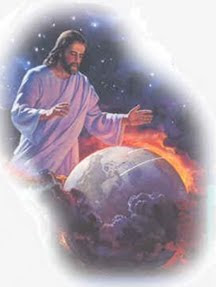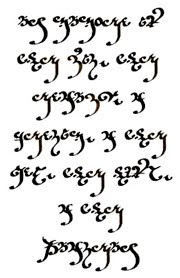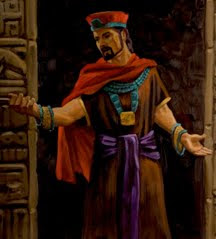 Mormon, in his abridgment of the Nephite record, again adds an interesting insight into the historical extent of the lands the Book of Mormon people occupied. He records that the people “did multiply and spread, and did go forth from the land southward to the land northward, and did spread insomuch that they began to cover the face of the whole earth, from the sea south to the sea north, from the sea west to the sea east” (Helaman 3:8). This reference to four seas, each named for one of the four cardinal directions, defined the outer limits of the occupied Book of Mormon lands, which Mormon suggests was the “face of the whole earth.” And which Jacob called an island (2 Nephi 10:20).
Mormon, in his abridgment of the Nephite record, again adds an interesting insight into the historical extent of the lands the Book of Mormon people occupied. He records that the people “did multiply and spread, and did go forth from the land southward to the land northward, and did spread insomuch that they began to cover the face of the whole earth, from the sea south to the sea north, from the sea west to the sea east” (Helaman 3:8). This reference to four seas, each named for one of the four cardinal directions, defined the outer limits of the occupied Book of Mormon lands, which Mormon suggests was the “face of the whole earth.” And which Jacob called an island (2 Nephi 10:20).During Nephi’s lifetime, probably when he was between 65 and 80 (559 and 545 B.C.), with Jacob being probably about 40 to 55 years of age, and a priest over the people, is preaching to the Nephites, which Nephi dutifully records in his record. This sermon, comprising chapters 6 through 33 of 2 Nephi, which also includes Nephi’s follow-up preaching, based on the writings of Isaiah, covers extensive doctrinal subjects. In the middle of Jacob’s sermon, he runs across Isaiah’s writings regarding some segments of the House of Israel were to be scattered on the isles of the sea, Jacob takes this opportunity to explain an issue to the Nephites that had been troubling them.
The issue was a concern to the Nephites over being cast off from the presence of the Lord because they were not in Jerusalem., where Lehi had originated, and the House of Israel dwelt.
Jacob says, “And now, my beloved brethren, seeing that our merciful God has given us so great knowledge concerning these things, let us remember him, and lay aside our sins, and not hang down our heads for we are not cast off; nevertheless, we have been driven out of the land of our inheritance; but we have been led to a better land, for the Lord has made the sea our path, and we are upon an isle of the sea” (2 Nephi 10:20).
Then, to make sure the people understand his meaning, again referring to Isaiah, he says, “But great are the promises of the Lord unto them who are upon the isles of the seas; wherefore as it says isles, there must needs be more than this, and they are inhabited also by our brethren” (2 Nephi 10:21).
In summing up his point, Jacob adds, “For behold, the Lord God has led away from time to time from the house of Israel, according to his will and pleasure. And now behold the Lord remembereth all them who have been broken off, wherefore he remembereth us also” (2 Nephi 10:12).
As Jacob told the Nephites, they had been led away, and led to an island, and that there are other islands where others of the House of Israel had been led, and that God remembers them all. Thus, the Land of Promise was an island, as Jacob tells us, completely surrounded by water, with the land compressed somewhere in the middle into a narrow neck of land, thus creating a land to the north and a land to the south with a narrow pass in between. Since this pattern does not meet the Mesoamerian model, nor the Great Lakes model, nor the Baja California model, each of these theorists must try and explain away passages in the scriptures that disagree with their models.






























